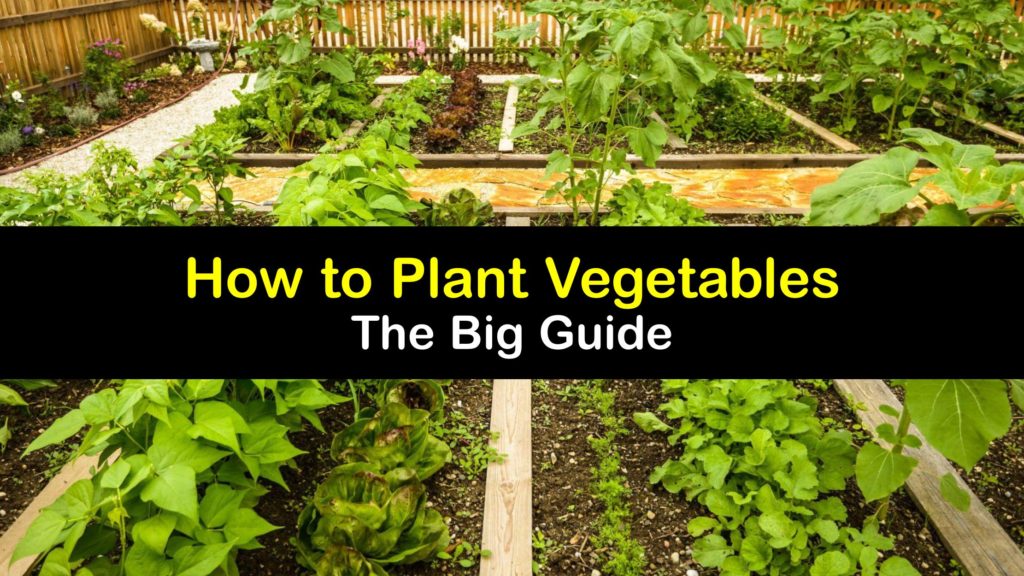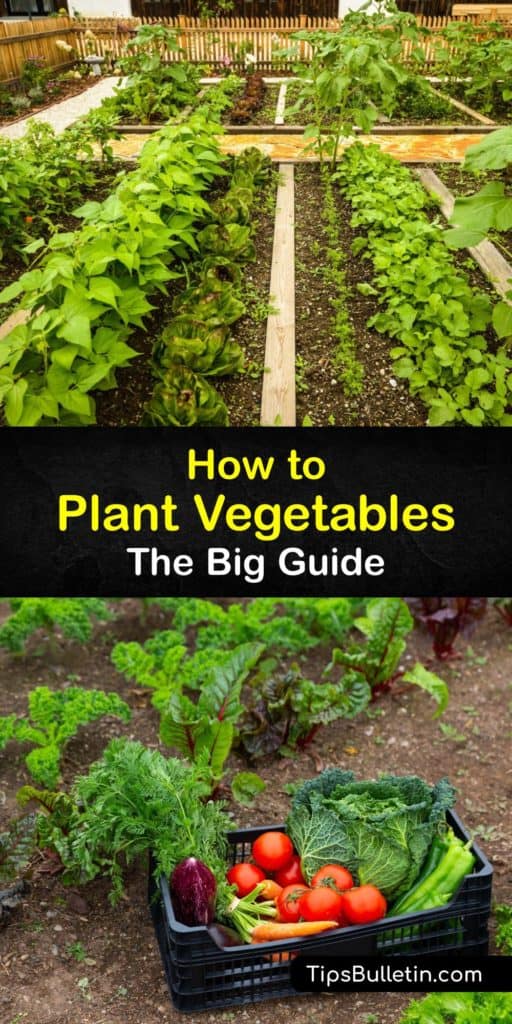Many families are eager to learn how to plant vegetables to produce their own food crops and become self-sufficient. Planting vegetables is a rewarding project appropriate for many gardens or spaces.
Whether you have access to a small garden space, several raised beds, a large traditional garden, or are working from containers; many options exist to grow vegetables at home.
When you grow your fruits and veggies, you experience the satisfaction of eating the freshest and most flavorful produce. If you have never tried food straight from the garden, you are in for a treat since the flavors are sweet and juicy, and the textures crisp. There is nothing comparable to the taste of homegrown vegetables.

Everything to Know about Planting Vegetables
While it may initially appear challenging, gardening is a tremendously gratifying activity. Once you understand the fundamentals of vegetable gardening and planning, such as choosing the appropriate veggies for your garden and how far apart to plant vegetables, it is simple to get started with vegetable gardening.
Knowing how to plant vegetables in your home garden provides endless opportunities to produce food for your family and enjoy fresh produce year-round. Raising a thriving garden is simple by following a few simple tips for planting vegetables.

Understanding key concepts such as how far apart to plant vegetables to avoid crowding or the best types of vegetables to grow in your area helps prevent crop failures or disease to promote a large harvest.
When selecting vegetables for your garden, consider your local climate, soil conditions, space allowance, and what fruits or veggies your family likes to eat.
Plants to Grow When Vegetable Gardening
Choosing what veggies to plant in raised garden beds or the vegetable garden is one of the most exciting parts of growing your own food. Making a garden plan ensures you have enough space and maximizes the food produced in a small garden or garden bed.
When choosing seed packets at the garden center to plant-vegetables, consider which veggies you often purchase at the grocery store or what your family likes to eat.
Think about the hours of sunlight your garden receives, the quality of your garden soil, and how much space you have for a trellis or other support structures. Also, remember the time of year, your chosen plant’s growing season, and soil temperatures at planting time.
How to Plant Vegetables
The best way to plant vegetables varies depending on the veggie you’re growing. Include compost and organic fertilizers to improve the soil quality for your plants. Garden supply stores or online labs test your soil’s acidity and suggest additives, or you can buy specially produced soil in bulk.
Because growing circumstances and ripening cycles vary by plant and season, don’t sow all seeds at once. Seed packs have planting dates on them. Many seeds are ready to plant in early spring after the last frost date as soil temperatures are high enough for the seeds to germinate.
Before making a gardening calendar, look over the optimal circumstances for each vegetable you intend to grow and understand its growing season and the best time to plant it. With all this done, you’re ready to plant seeds.
How Far Apart to Plant Vegetables
Vegetable plant spacing is essential to successful growth. Vegetable plants compete for resources like nutrients, sunlight, and water when they are too close together. Crowding reduces airflow and increases the transmission of diseases and pests.
Most seed packages have spacing guidelines with instructions on how far apart to space seeds, how far apart to space rows, and how deep to sow each seed. Follow these directions carefully to give your seeds the best chance of germination and ensure your mature plants thrive.
Some plants, such as tomatoes, require a trellis or cage to climb. When planting, it’s essential to plan for support structures to ensure you have enough space later and don’t disturb your vegetable plant’s roots.
Caring for Young Plants
Simple care tips help seedlings develop into young plants and eventually mature to produce vegetables. Beyond basic principles like planting warm-season plants in hot weather, other considerations such as weeding, offering shade from direct sunlight, or employing pest control ensure your plants thrive.
Growers may fertilize by mixing organic matter into the ground or using liquid or granular fertilizers. Follow guidelines for fertilizing whatever kind of veggies you are growing to ensure the best results. Fertilizing vegetables enriches the soil and provides the nutrients plants need to grow and produce a substantial harvest.
Regular watering is crucial for plants to thrive. Generally, most plants require an inch of water per week, though this varies with full sun, temperature, and humidity. Mulching extends the periods between watering, as a thin layer of mulch helps the soil retain moisture.
Harvesting Your Homegrown Vegetables
When veggies are young and tender, it is the ideal time for harvesting them. When to pick vegetables is best right before you cook with them and only collect what you plan to use. When root crops reach an edible size, pull them out of the ground.
When harvesting leaf crops, trim the plants to two inches from the ground. Learn to store each kind of produce correctly to extend its shelf life and avoid food waste.
Growing vegetables in the home garden is an excellent way to save trips to the grocery store and enjoy homegrown produce. Many vegetables are straightforward to grow and produce a large yield. By understanding a few simple principles, any grower may cultivate a vast array of veggies in their own backyard.

If you loved this article on how to plant vegetables, please share this brilliant information on planting vegetables with your friends and family on Pinterest and Facebook.